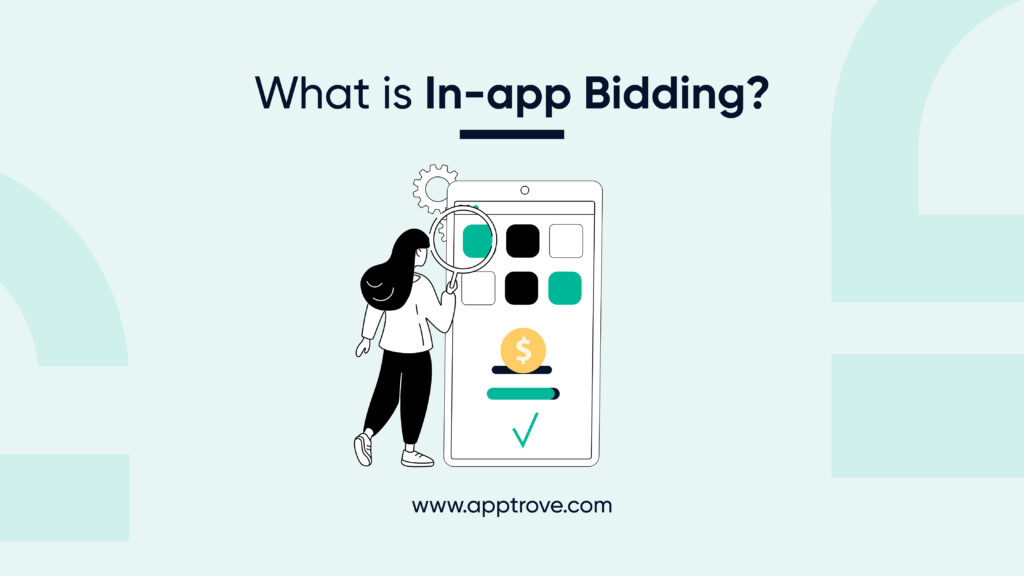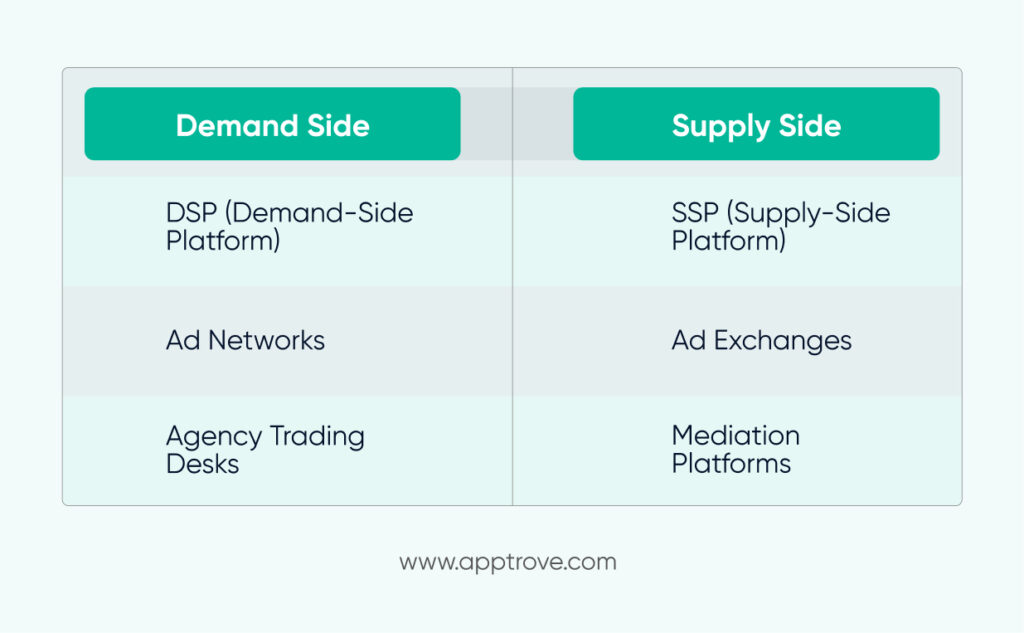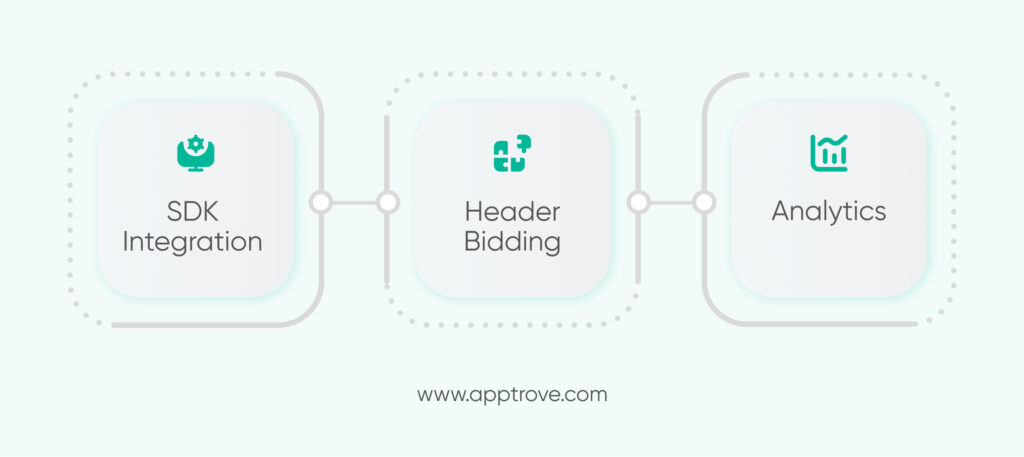
In-app bidding is a real time advertising technology changing the game for mobile app publishers and how they sell their ad space. It creates a competitive market where many advertisers want to show their ads in mobile apps at the same time. In-app bidding replaces the old way of selling ad space first in first out sequential process by putting every advertiser on a level playing field, where advertisers can bid on every single ad impression in real time. This fair approach means maximum value for publishers and fair access to premium inventory for advertisers, resulting in higher revenue and more efficient ad delivery.
In-App Bidding Terminology: Terms and Definitions

Programmatic Advertising
In-app bidding is built on programmatic advertising – the automated buying and selling of ad space. In the app environment, this happens in real time so advertisers and publishers can transact instantly.
Real-Time Bidding (RTB)
RTB is the engine of in-app bidding, allowing for instant auctions for every ad impression. When a user triggers an ad opportunity, multiple advertisers can bid at the same time, and the highest bidder wins the ad.
First-Price vs. Second-Price Auctions
First-price auctions means the winning bidder pays what they bid. Second-price auctions means the winner pays just a hair above the second-highest bidder. Both publishers and advertisers need to understand these auction types to optimise their strategy.
Essential Components of the In-App Bidding Ecosystem

The Demand Side
Demand-Side Platforms (DSPs): These powerhouses let advertisers buy ad inventory across multiple exchanges through one interface. DSPs use advanced algorithms to evaluate impressions and bid on targeting criteria.
Ad Networks: Ad networks still play a big role in in-app bidding, often participating in unified auctions alongside DSPs. Modern networks have adapted to real-time bidding.
Agency Trading Desks: These teams within advertising agencies manage programmatic campaigns for clients, using various DSPs and bidding strategies to achieve objectives.
The Supply Side
Supply-Side Platforms (SSPs): SSPs are the technical backbone of publishers, managing and optimizing their ad inventory. They connect publishers to multiple demand sources and facilitate real-time auctions.
Ad Exchanges: These marketplaces connect publishers and advertisers, providing the infrastructure for real-time bidding and transparency.
Mediation Platforms: These tools help publishers manage multiple ad networks and demand sources, optimize revenue with advanced algorithms and reporting.
In-App Bidding Integration: Technical Implementation

SDK Implementation
The Software Development Kit serves as the technical bridge between apps and advertising platforms. Modern SDKs are designed to minimize the impact on app performance while maximizing revenue potential.
Header Bidding Containers
These specialized containers manage multiple demand partners, ensuring efficient auction processes while maintaining optimal load times and user experience.
Analytics and Reporting Tools
Advanced analytics platforms provide real-time insights into bidding performance, helping publishers and advertisers optimize their strategies continuously.
In-App Bidding Analytics: Performance Metrics and KPIs
Key Performance Indicators
CPM (Cost Per Mille): The standard metric for measuring ad inventory value, representing the cost per thousand impressions. In-app bidding typically drives higher CPMs through increased competition.
Fill Rate: The percentage of ad requests that result in actual ad displays. Higher fill rates generally indicate better monetization efficiency.
Auction Timeout: The maximum time allowed for demand partners to respond to bid requests. Optimizing this parameter balances revenue potential with user experience.
Advanced Metrics
User LTV (Lifetime Value): Understanding how different ad strategies impact user retention and long-term value helps publishers optimize their monetization approach.
ARPDAU (Average Revenue Per Daily Active User): This metric helps publishers track the effectiveness of their monetization strategy on a per-user basis.
Implementation Strategies
Getting Started
Publisher Preparation: Before implementing in-app bidding, publishers should assess their current monetization setup, identify key metrics, and establish clear objectives.
Technical Requirements: Understanding the technical prerequisites, including SDK compatibility, server requirements, and integration processes, ensures smooth implementation.
Advanced Implementation
A/B Testing Frameworks: Implementing robust testing frameworks helps publishers optimize their setup by comparing different configurations and strategies.
Hybrid Approaches: Many publishers benefit from combining in-app bidding with traditional waterfall setups during their transition period.
Best Practices and Optimization Techniques
Revenue Optimization
Floor Price Management: Setting and adjusting floor prices helps publishers maximize revenue while maintaining inventory value.
Demand Partner Selection: Carefully selecting and managing demand partners ensures optimal competition for inventory while maintaining quality standards.
User Experience Considerations
Ad Load Optimization: Balancing ad frequency with user experience helps maintain long-term user engagement and retention.
Creative Quality Control: Implementing standards for creative quality and relevance helps maintain a positive user experience while maximizing revenue.
Future Trends and Technologies
Emerging Technologies
Machine Learning in Bidding: Advanced algorithms are increasingly being used to optimize bidding strategies and predict inventory value.
Blockchain Applications: Emerging blockchain technologies promise to bring additional transparency and efficiency to the bidding process.
Industry Evolution
Privacy-First Solutions: The industry is adapting to increased privacy regulations with new targeting and measurement solutions.
Cross-Channel Integration: In-app bidding is increasingly being integrated with broader programmatic advertising ecosystems.
In-app bidding continues to evolve, offering publishers and advertisers increasingly sophisticated tools for monetization and user acquisition. Success in this ecosystem requires staying informed about new developments while maintaining focus on core metrics and user experience.